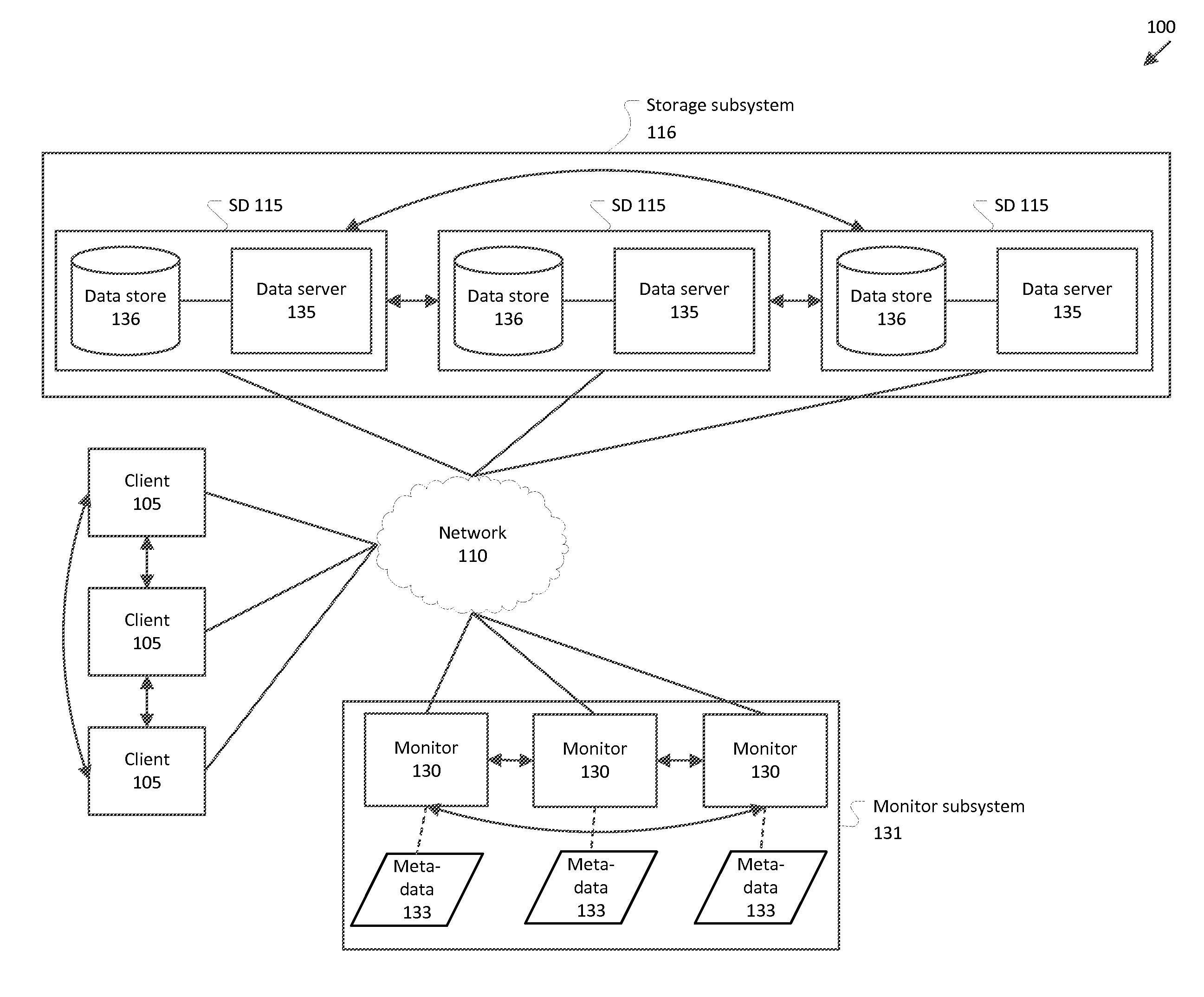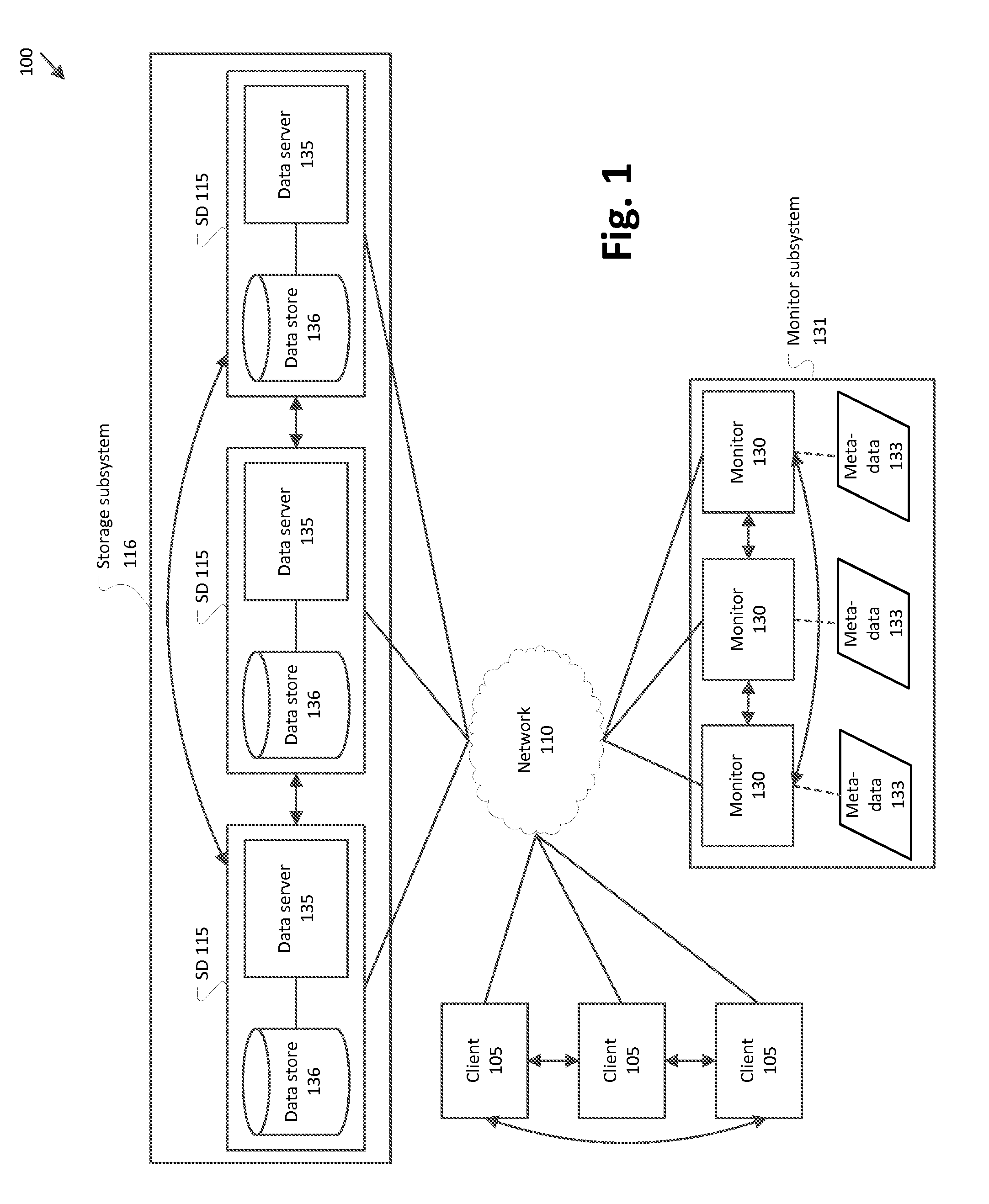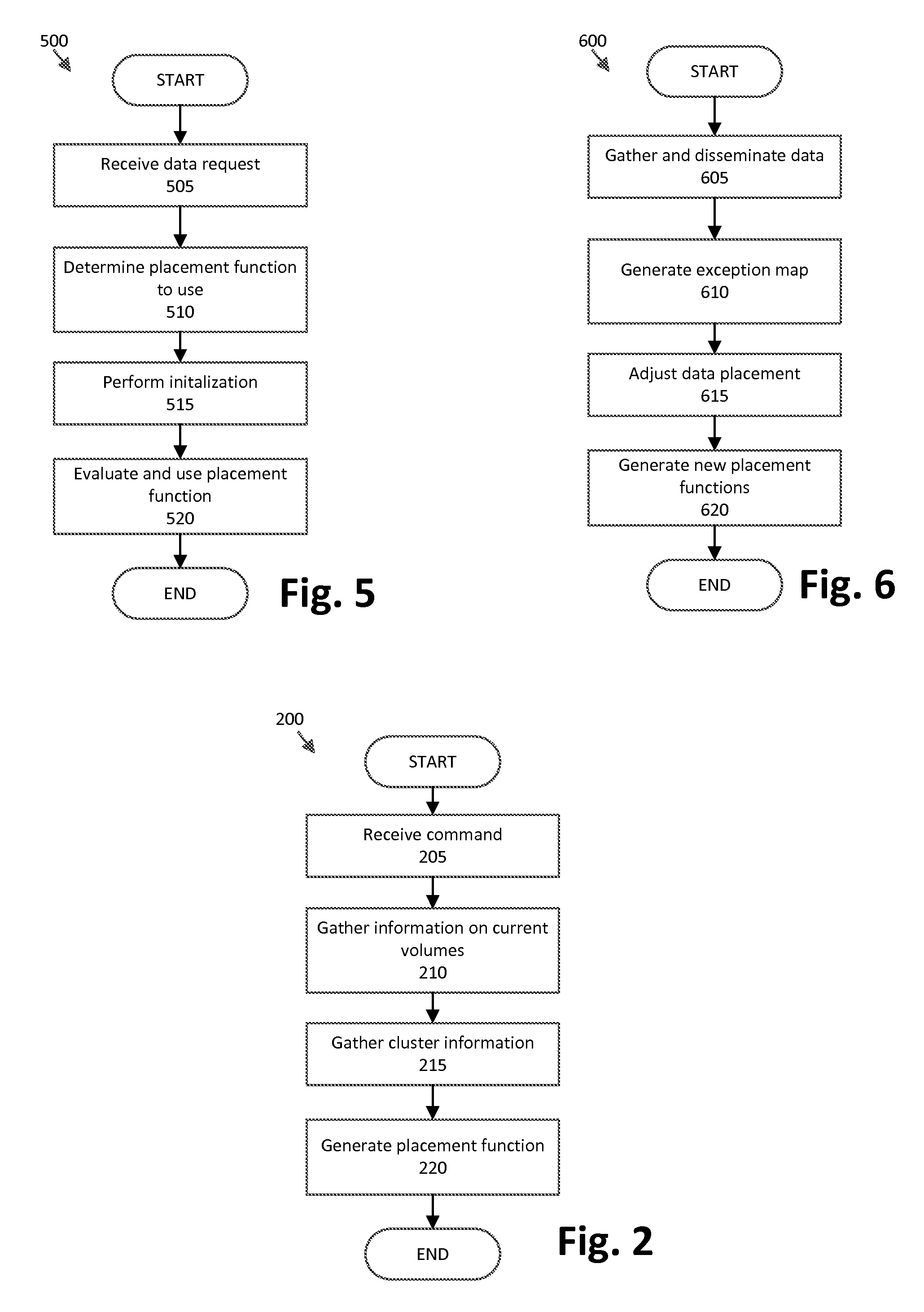Dynamic data placement for distributed storage
a distributed storage and data placement technology, applied in the field of dynamic data placement for distributed storage, can solve the problems of large data volume, large number of users, and difficulty in ensuring data integrity, and achieve the effect of improving the likelihood of data errors with the amount of data stored
- Summary
- Abstract
- Description
- Claims
- Application Information
AI Technical Summary
Benefits of technology
Problems solved by technology
Method used
Image
Examples
Embodiment Construction
Introduction
[0011]A placement function may be generated according to several goals. For example, first, the placement function has the ability to use disparate methods for governing the location of data and parity, rather than being confined to a parameterization of a single method. Thus, data location and parity goals may be met in the context of a highly variable composition of clusters. Second, when new methods are developed or when administrators require custom data storage strategies, use of placement functions as disclosed herein provides the ability to instantiate these new strategies throughout a storage system without explicitly modifying each client and server.
[0012]Accordingly, an administrator may specify constraints on container (e.g., volume) parameters and placement goodness metrics so that an optimal placement decision can be made automatically. In addition, storage devices and clients can adapt to the addition or removal of storage devices automatically, thereby all...
PUM
 Login to View More
Login to View More Abstract
Description
Claims
Application Information
 Login to View More
Login to View More - R&D
- Intellectual Property
- Life Sciences
- Materials
- Tech Scout
- Unparalleled Data Quality
- Higher Quality Content
- 60% Fewer Hallucinations
Browse by: Latest US Patents, China's latest patents, Technical Efficacy Thesaurus, Application Domain, Technology Topic, Popular Technical Reports.
© 2025 PatSnap. All rights reserved.Legal|Privacy policy|Modern Slavery Act Transparency Statement|Sitemap|About US| Contact US: help@patsnap.com



